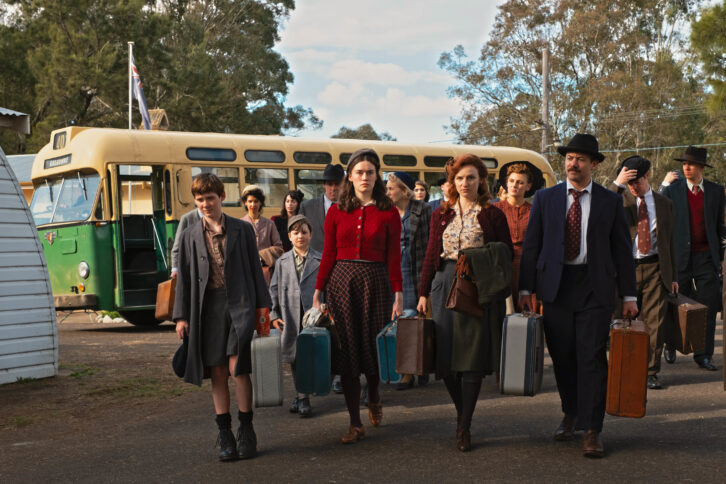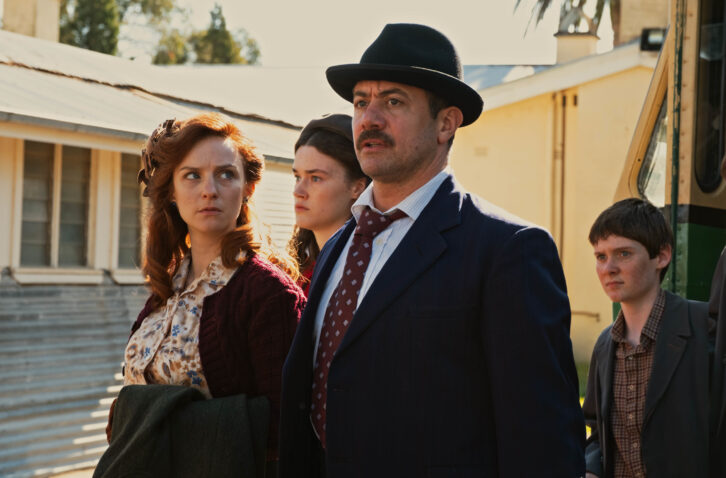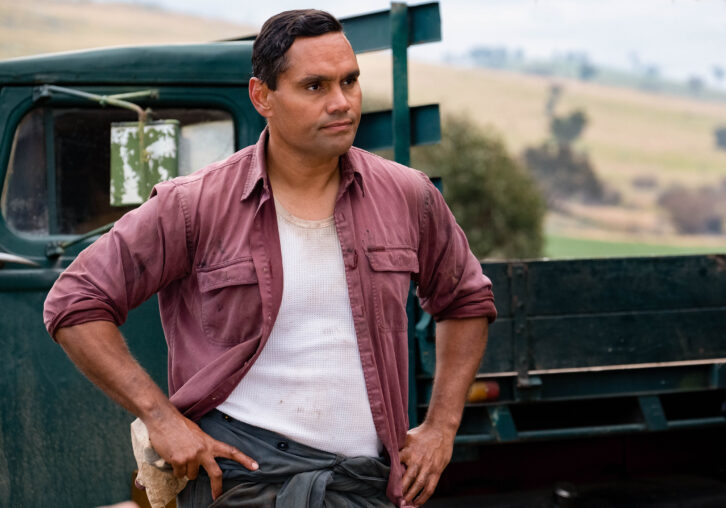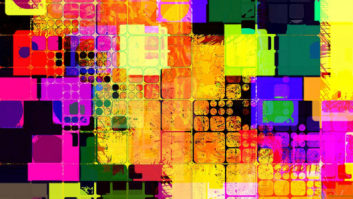The timing of the BBC’s new Sunday night drama Ten Pound Poms couldn’t be better. With Britain facing its own boat crisis and calls from some quarters to introduce an “Australian-style point-based system”, you wouldn’t be far wrong if you thought the series from Eleven Film starring Michelle Keegan was exploiting the zeitgeist permeating 2023 Britain.
“I think the specifics of an Australian-style points system being mooted was coincidental but the fact that immigration has been such a prickly and so much talked about topic over the last few years – that bit is quite deliberate,” says director, Jamie Stone. “I liked that it’s an inverted immigrant story. It reminds us that we were economic migrants once.”
For those unfamiliar with the subject matter, the Australian government introduced the Assisted Passage Migration Scheme in 1945, which allowed migrants to move Down Under for £10, in a bid to increase the population.
The series looks and feels ridiculously authentic, making the viewer feels like it was shot in the era it is set. Yet despite the technology at their disposal, Stone and the DoP, Meg White, avoided blue and green screens where they could.
“We tried not to rely on it as we wanted all of our thresholds between the hut and the outside to be real and to do some iris pulls to take us over those thresholds,” Stone explains. “All of the vehicle stuff is shot on low-loaders and car mounts because we didn’t want to have any blue or green screen there. We shot on the Alex Mini LF because I like the larger sensor and what it does to the depth of field. We shot with some Panaspeed lenses that have quite vintage characteristics and they were slightly detuned, which I think helped us get away from an overly digital look.”

The visual inspirations that Stone and White talked about early on were from films of the 1970s. “The sequences on Terry’s work site were inspired by the drilling scenes in Five Easy Pieces, starring Jack Nicholson,” Stone adds. “There’s also an amazing Australian film from the ’70s called Wake in Fright, which I hadn’t seen before that Meg introduced me to. Again, it has this earthy, sweaty texture to it that we really wanted, especially for the pub scenes.”
Stone says that “in an ideal world it would have been lovely to shoot this on celluloid,” but that wasn’t impossible due to cost and lack of availability of labs. “As far as I’m aware Australia didn’t have the facilities, so we went with the digital workflow and tried to gear everything toward that kind of feel,” he continues. “It’s just not practically possible anymore. However, we did all that we could to get away from an overly digital look, from the choice of lenses to wherever possible having atmospherics even very lightly in the air just to kind of give us a softer and more lived-in feel.”
In the grade, Stone and his team used a heavier film grain than he’d done in any job before. “It felt right,” he says. “The nice thing about the Alexa is having the latitude to play with that as well. It’s also the first thing I shot properly in HDR, too. That helps give it a slightly more celluloid-like range in the image.”

The team was mostly based around Sydney at Scheyville National Park, which was once a prisoner-of-war internment camp and latterly used to process migrants. The rationale was to use as many existing structures as possible.
“Most of the huts were gone so we rebuilt them on the footprints of where the old ones had been,” Stone says. “There are two remaining huts there and ours were indistinguishable. “We also filmed in a town called Carcoar – a five-hour drive from Sydney across the Blue Mountains. Once you get across the Blue Mountains the landscape just opens up and becomes a lot more rural, open and empty. It had the colours Meg and I wanted.”
At the camp, a number of 2D wooden huts were built for wide shots to get the hut numbers up. Australian VFX vendor Slate expanded the camp further in aerial shots using digital huts and crowd simulation, which was also employed for the boat arrival sequence. But outside of these moments, VFX were kept to a minimum. However, such was the unforeseen bad weather in…wait for it…Australia, a lot of sky manipulation and other weather-related chicanery was deployed.
“The weather in Australia was pretty horrendous, so we had to work quite hard on the shoot and in post to try and keep it as a sunny show as that was a huge part of the pitch,” he explains. “Most of the shoot was in Australia and we had biblical floods and hailstorms, snow and high winds, thunder and a lot of rain that we had to dance around the whole time.”

That said, the production team managed to use the inclement weather to its advantage. “My philosophy has always been take what you can with the weather,” Stone says. “If you don’t have cover then you just have to forge on through and work with the weather you’re given. It was hard on this job because the dialogue referenced the sun – the fact they were coming from rainy Britain to sunny Australia.”
To remedy this, the decision was taken to supplement overcast exteriors with a lot of lamps and then manipulate weather patterns. “If it looked a bit rainy there but with a break in the clouds over there, we could model light on the cast in certain scenes and then replace the sky to help sell a sunny day,” Stone says. “Quite often you can see a hazy dappled patch of evening sun through haze but it’s actually through rain. Once you’ve pulled the sun out a bit more in the grade, a lot of rain can look like hazy sun.”
Ironically, the hottest day of the shoot was one of the days they were shooting Australia as England for the scene at Portsmouth harbour. “We finally wanted cloud and cold and the opposite happened,” Stone says. Snow on the ground was added with VFX to distance the sequence from the Australian arrival scenes.
The team also used more old-school trickery, such as the tried and tested Pepper’s Ghost, which was popularised by John Henry Pepper with a theatre demonstration in 1862. “This is vintage VFX – we wanted a man on fire and it involved shooting through a bit of glass at a 45-degree angle and burning a chicken wire effigy whilst the actor stands off to the other side to look like they’re in flames,” Stone continues. “It’s still such a clever technique.”
The scheme came to an end in 1982 – at which time it cost £75 – so if this series is giving you big ideas, you’ve, quite literally, missed the boat.
Ten Pound Poms is currently airing on BBC One on Sunday at 9pm.







